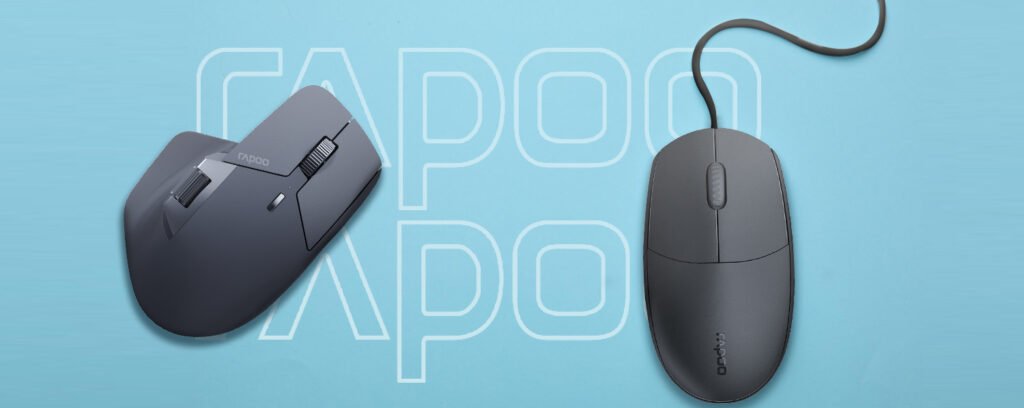


Choosing the right mouse can make a world of difference in your daily workflow, especially if you’re a remote worker, IT professional, or anyone juggling multiple devices. In this blog, we’ll break down the real differences between a multi-device mouse and a traditional mouse, helping you decide which is best for your productivity, comfort, and tech setup. We’ll explore features, connectivity, ergonomics, and use cases so you can make an informed choice for your workspace.
A multi-device mouse is a modern productivity tool designed for seamless switching between two or more devices, such as a laptop, desktop, tablet, or even a smartphone using Bluetooth or a wireless USB receiver. With just a button press or a simple gesture, you can control multiple screens without the hassle of unplugging cables or pairing new devices each time. Popular models, such as the Rapoo M100 Silent, Rapoo M200, and Rapoo M650, have set the standard for this category, offering easy device switching and advanced ergonomic designs.
Key Features:
A traditional mouse typically refers to a single-device input device, either wired (using a USB cable) or wireless (with a dedicated USB receiver). These mouse are designed for straightforward and reliable use, making them ideal for single-computer setups. They come in various forms, including mechanical mice, optomechanical mice, and the classic wired laptop mouse.
Key Features:
| Feature | Multi-Device Mouse | Traditional Mouse |
| Device Switching | Yes (2–3 devices) | No (single device only) |
| Connectivity | Bluetooth, Wireless USB | Wired (USB), Wireless USB |
| Programmable Buttons | Often included | Sometimes (mainly in gaming mice) |
| Ergonomics | Advanced options available | Varies (from basic to ergonomic) |
| Price Range | Higher (premium segment) | Wide range (budget to premium) |
| Use Case | Multi-device workflows, remote work | Single-device use, general tasks |
| Setup Complexity | Slightly higher (pairing required) | Simple plug-and-play |
Multi-Device Mouse:
These mice typically use Bluetooth, allowing you to pair with several devices at once. Some models also include a wireless USB dongle for devices that lack Bluetooth. This flexibility is a game-changer for professionals who switch between a work laptop, home desktop, and tablet throughout the day.
Traditional Mouse:
A wired mouse connects via a USB cable and is powered directly by the computer, ideal for reliability and zero lag, especially in gaming or design work. Wireless USB mice use a dongle for freedom of movement but are generally limited to one device at a time.
Multi-Device Mouse:
If you’re running multiple computers side by side or frequently moving between devices, a multi-device mouse streamlines your workflow. You can copy text, drag files, and navigate across screens without missing a beat. This reduces desktop clutter and eliminates the need for multiple mice.
Traditional Mouse:
For users who stick to one device, like a desktop PC or a single laptop, a traditional mouse is often more affordable and easier to set up. It’s perfect for students, casual users, or anyone who doesn’t need multi-device support.
Ergonomics matters, especially for those spending hours at their desk. Many multi-device mice, such as the Rapoo MT760L, are designed with hand support and comfort in mind, reducing the risk of repetitive strain injuries. Traditional mice range from basic shapes to highly ergonomic models, but budget options may lack advanced comfort features.
Choose a Multi-Device Mouse if:
Choose a Traditional Mouse if:
The choice between a multi-device mouse and a traditional mouse comes down to your workflow and device ecosystem. For remote workers, IT professionals, and multitaskers, a multi-device mouse unlocks new levels of productivity and convenience. For students, casual users, or those with a single setup, a traditional mouse remains a solid, cost-effective option.
Before making your choice, consider your daily habits, workspace needs, and whether you’ll benefit from advanced features like Bluetooth switching or programmable controls. The right mouse can transform your digital experience—so choose wisely and work smarter!